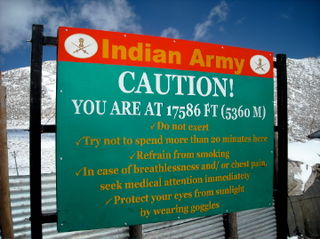
Tobacco is the common name of several plants in the genus Nicotiana of the family Solanaceae, and the general term for any product prepared from the cured leaves of these plants. More than 70 species of tobacco are known, but the chief commercial crop is N. tabacum. The more potent variant N. rustica is also used in some countries.

Nicotine is a naturally produced alkaloid in the nightshade family of plants and is widely used recreationally as a stimulant and anxiolytic. As a pharmaceutical drug, it is used for smoking cessation to relieve withdrawal symptoms. Nicotine acts as a receptor agonist at most nicotinic acetylcholine receptors (nAChRs), except at two nicotinic receptor subunits where it acts as a receptor antagonist.
Multiple chemical sensitivity (MCS), also known as idiopathic environmental intolerances (IEI), is an unrecognized and controversial diagnosis characterized by chronic symptoms attributed to exposure to low levels of commonly used chemicals. Symptoms are typically vague and non-specific. They may include fatigue, headaches, nausea, and dizziness.

Altitude sickness, the mildest form being acute mountain sickness (AMS), is a harmful effect of high altitude, caused by rapid exposure to low amounts of oxygen at high elevation. People can respond to high altitude in different ways. Symptoms may include headaches, vomiting, tiredness, confusion, trouble sleeping, and dizziness. Acute mountain sickness can progress to high-altitude pulmonary edema (HAPE) with associated shortness of breath or high-altitude cerebral edema (HACE) with associated confusion. Chronic mountain sickness may occur after long-term exposure to high altitude.
Morning sickness, also called nausea and vomiting of pregnancy (NVP), is a symptom of pregnancy that involves nausea or vomiting. Despite the name, nausea or vomiting can occur at any time during the day. Typically the symptoms occur between the 4th and 16th week of pregnancy. About 10% of women still have symptoms after the 20th week of pregnancy. A severe form of the condition is known as hyperemesis gravidarum and results in weight loss.

Granisetron is a serotonin 5-HT3 receptor antagonist used as an antiemetic to treat nausea and vomiting following chemotherapy and radiotherapy. Its main effect is to reduce the activity of the vagus nerve, which is a nerve that activates the vomiting center in the medulla oblongata. It does not have much effect on vomiting due to motion sickness. This drug does not have any effect on dopamine receptors or muscarinic receptors.

Space adaptation syndrome (SAS) or space sickness is a condition experienced by as many as half of all space travelers during their adaptation to weightlessness once in orbit. It is the opposite of terrestrial motion sickness since it occurs when the environment and the person appear visually to be in motion relative to one another even though there is no corresponding sensation of bodily movement originating from the vestibular system.

Snus is a tobacco product, originating from a variant of dry snuff in early 18th-century Sweden. It is placed between the upper lip and gum for extended periods, as a form of sublabial administration. Snus is not fermented. Although used similarly to American dipping tobacco, snus does not typically result in the need for spitting, and, unlike naswar, snus is steam-pasteurized.

Nicotine replacement therapy (NRT) is a medically approved way to treat people with tobacco use disorder by taking nicotine through means other than tobacco. It is used to help with quitting smoking or stopping chewing tobacco. It increases the chance of quitting tobacco smoking by about 55%. Often it is used along with other behavioral techniques. NRT has also been used to treat ulcerative colitis. Types of NRT include the adhesive patch, chewing gum, lozenges, nose spray, and inhaler. The use of multiple types of NRT at a time may increase effectiveness.

Nicotine poisoning describes the symptoms of the toxic effects of nicotine following ingestion, inhalation, or skin contact. Nicotine poisoning can potentially be deadly, though serious or fatal overdoses are rare. Historically, most cases of nicotine poisoning have been the result of use of nicotine as an insecticide. More recent cases of poisoning typically appear to be in the form of Green Tobacco Sickness, or due to unintended ingestion of tobacco or tobacco products or consumption of nicotine-containing plants.
Nicorette is the brand name of a number of products for nicotine replacement therapy (NRT) that contain nicotine polacrilex. Developed in the late 1970s in Sweden by AB Leo in the form of a chewing gum, Nicorette was the first nicotine replacement product on the market.

Dipping tobacco is a type of finely ground or shredded, moistened smokeless tobacco product. It is commonly and idiomatically known as dip. Dipping tobacco is used by placing a pinch, or "dip", of tobacco between the lip and the gum. The act of using it is called dipping. Dipping tobacco is colloquially called chaw, snuff, rub, or fresh leaf among other terms; because of this, it is sometimes confused with other tobacco products—namely dry snuff.

Dolasetron (trade name Anzemet) is a serotonin 5-HT3 receptor antagonist used to treat nausea and vomiting following chemotherapy. Its main effect is to reduce the activity of the vagus nerve, which is a nerve that activates the vomiting center in the medulla oblongata. It does not have much antiemetic effect when symptoms are due to motion sickness. This drug does not have any effect on dopamine receptors or muscarinic receptors.

Varenicline, sold under the brand names Chantix and Champix among others, is a medication used for smoking cessation and for the treatment of dry eye disease. It is a nicotinic receptor partial agonist and a cholinergic agonist. When activated, this receptor releases dopamine in the nucleus accumbens, the brain's reward center, thereby reducing cravings and withdrawal symptoms associated with smoking cessation.

Dichlorvos is an organophosphate widely used as an insecticide to control household pests, in public health, and protecting stored products from insects. The compound has been commercially available since 1961. It has become controversial because of its prevalence in urban waterways and the fact that its toxicity extends well beyond insects. Since 1988, dichlorvos cannot be used as a plant protection product in the EU.

Nicotine dependence is a state of dependence upon nicotine. Nicotine dependence is a chronic, relapsing disease defined as a compulsive craving to use the drug, despite social consequences, loss of control over drug intake, and emergence of withdrawal symptoms. Tolerance is another component of drug dependence. Nicotine dependence develops over time as a person continues to use nicotine. The most commonly used tobacco product is cigarettes, but all forms of tobacco use and e-cigarette use can cause dependence. Nicotine dependence is a serious public health problem because it leads to continued tobacco use, which is one of the leading preventable causes of death worldwide, causing more than 8 million deaths per year.

The cultivation of tobacco usually takes place annually. The tobacco is germinated in cold frames or hotbeds and then transplanted to the field until it matures. It is grown in warm climates with rich, well-drained soil. About 4.2 million hectares of tobacco were under cultivation worldwide in 2000, yielding over seven million tonnes of tobacco.
Schizophrenia and tobacco smoking have been historically associated. Smoking is known to harm the health of people with schizophrenia.
The use of electronic cigarettes (vaping) carries health risks. The risk depends on the fluid and varies according to design and user behavior. In the United Kingdom, vaping is considered by some to be around 95% less harmful than tobacco after a controversial landmark review by Public Health England.
Occupational heat stress is the net load to which a worker is exposed from the combined contributions of metabolic heat, environmental factors, and clothing worn, which results in an increase in heat storage in the body. Heat stress can result in heat-related illnesses, such as heat stroke, hyperthermia, heat exhaustion, heat cramps, heat rashes, and chronic kidney disease (CKD). Although heat exhaustion is less severe, heat stroke is a medical emergency and requires emergency treatment, which if not provided, can lead to death.














